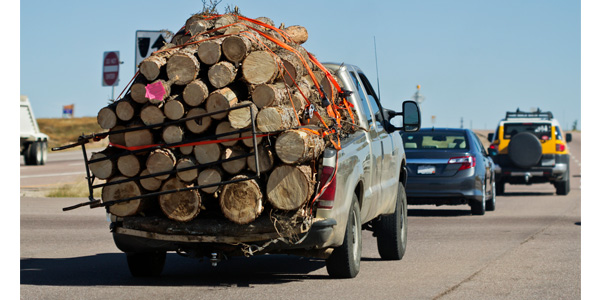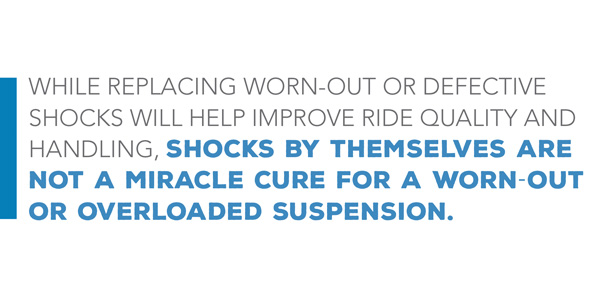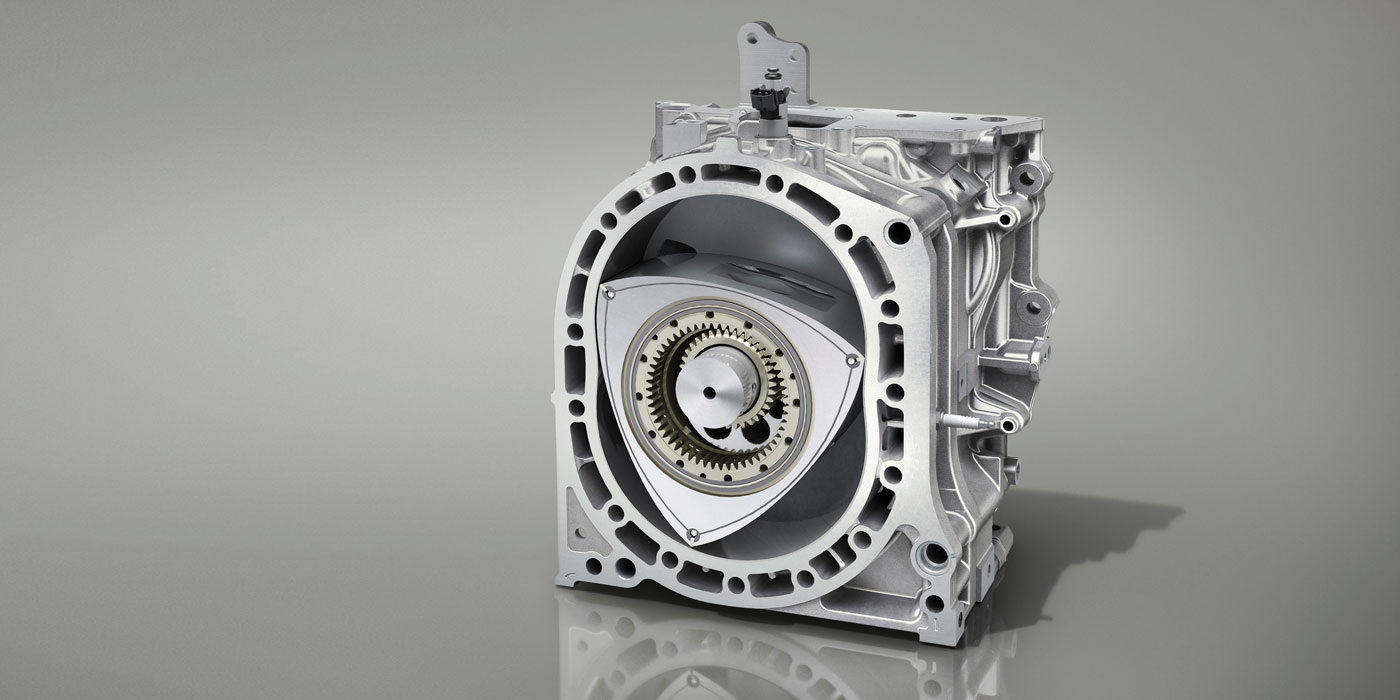
Shock absorbers play an important role in a vehicle’s suspension, but it isn’t the role that many customers (and even some counter people) think.
It’s common to have customers approach the counter searching for “heavy-duty” shocks, with the expectation that upgrading their shocks will increase the capacity and capability of their truck. While replacing worn-out or defective shocks will help improve ride quality and handling, shocks by themselves are not a miracle cure for a worn-out or overloaded suspension. Every truck has its limits, and those limits are more related to the gross vehicle-weight rating (GVWR) than to the shocks.
You may have noticed references to “GVWR” in catalog listings for brake, axle and suspension parts. Generally, we’re able to help a customer identify catalog differences in GVWR by asking them simple questions, such as the number of lugnuts on each wheel, or if the truck has dual rear wheels. Sometimes, they must resort to reading the certification label in the doorjamb, if there are no other obvious clues.
GVWR is how manufacturers express the maximum amount of weight that the truck can safely handle, but there’s a catch. The truck’s certified GVWR includes the weight of the truck, passengers, accessories, fluids and everything else rolling around in the cab of the truck – not just the pile of boards and cinder blocks you just bought at the home-improvement store!
Air shocks, load-adjustable coilover shocks and “helper” springs are very common parts requests from truck owners, but like conventional shock absorbers, these add-ons don’t increase the load-carrying capacity of the truck. These components are intended to help level the vehicle and maintain ride height when additional loads are placed on the suspension. The extra dampening offered by these kinds of ride-control products allows a properly equipped vehicle to haul heavy payloads or trailers safely and more comfortably than the same vehicle equipped with conventional shocks.

Here in the Northeast, air bags or rubber “bump-stop” springs are another common upgrade for the front end of pickups used for plowing. Hanging a plow frame and blade off the front of a truck redistributes the truck’s weight bias forward in the same way that hitching to a trailer would cause it to sag in the rear. Many newer trucks already come from the factory with a “forward rake” – a nose-down appearance that leads some new-truck buyers to install leveling kits or air bags in an effort to get the “level look” when cruising around town unloaded.
Trucks are a lot more refined than they were even 20 years ago, and today’s truck buyers expect a level of comfort and luxury well beyond the basic vocational truck needs of plumbers, contractors and farmers. As counter professionals, we should be prepared to offer our customers quality ride-control products that suit their individual needs. We need to understand their expectations of our products and communicate honestly how we can (and cannot) meet those expectations.
Remember, new shocks will not increase your payload capacity or turn your “half-ton” pickup into a fifth-wheel trailering beast. But they will help make a well-maintained and properly equipped truck safer, and a lot more fun to drive!












